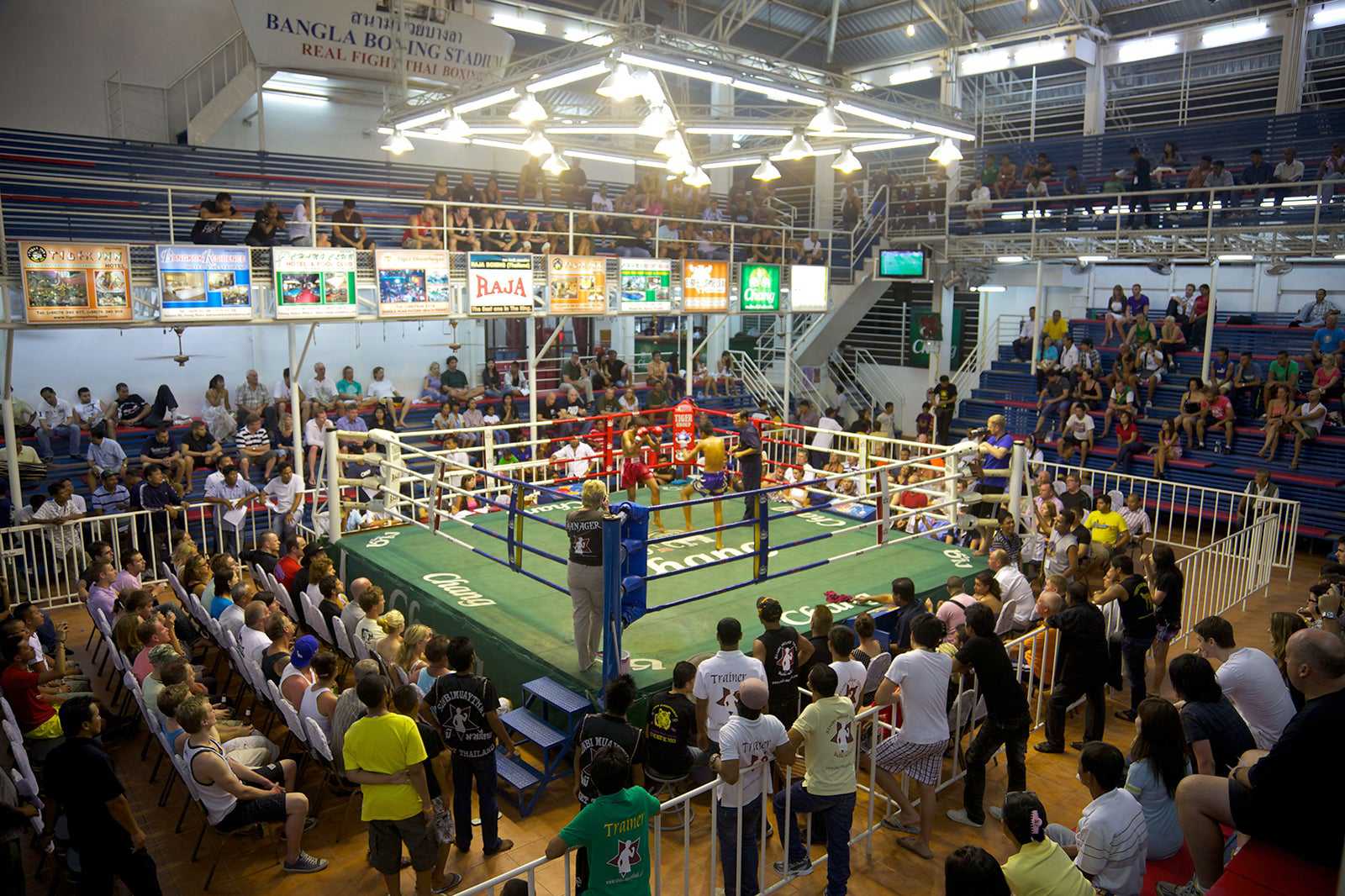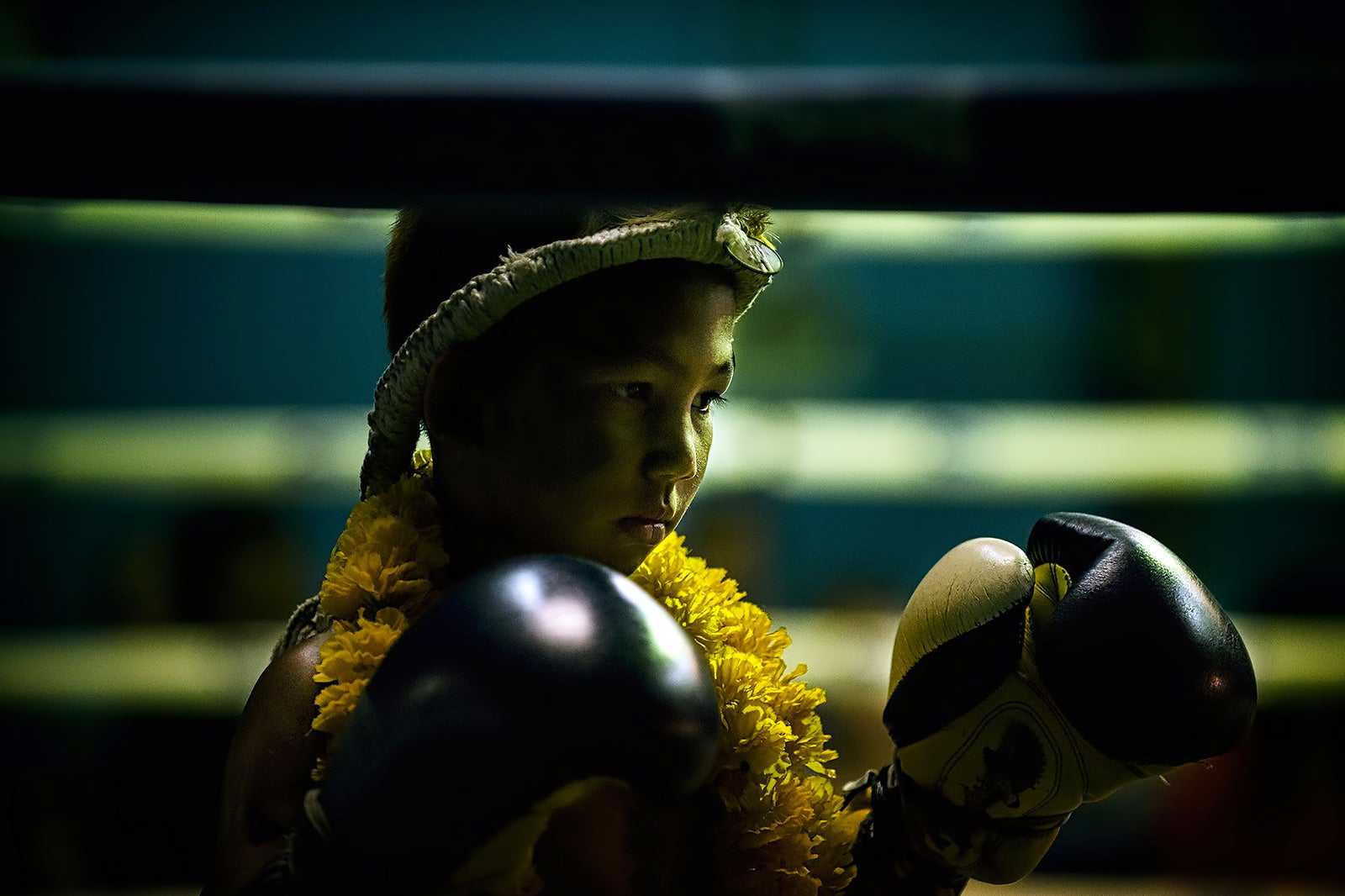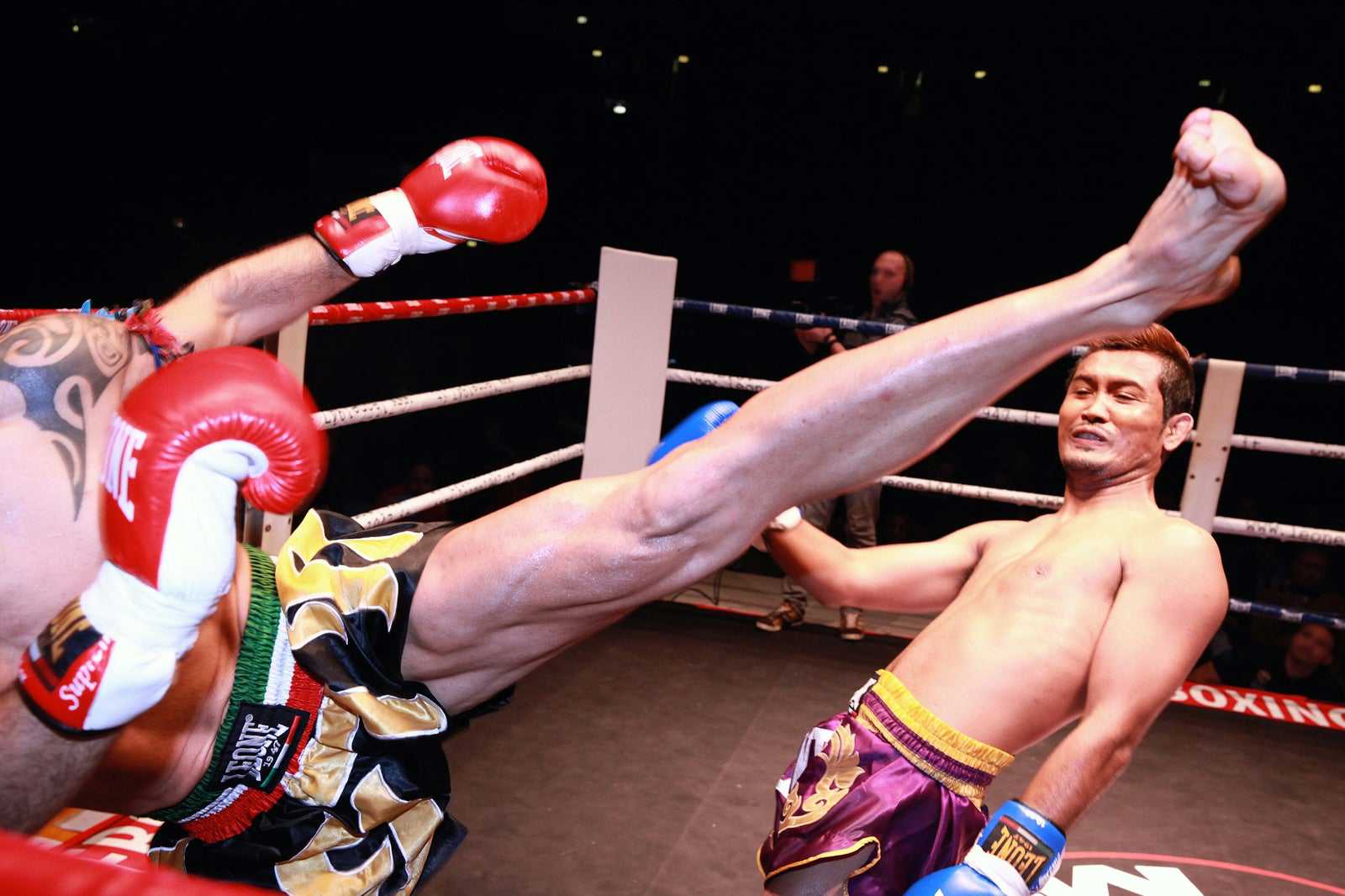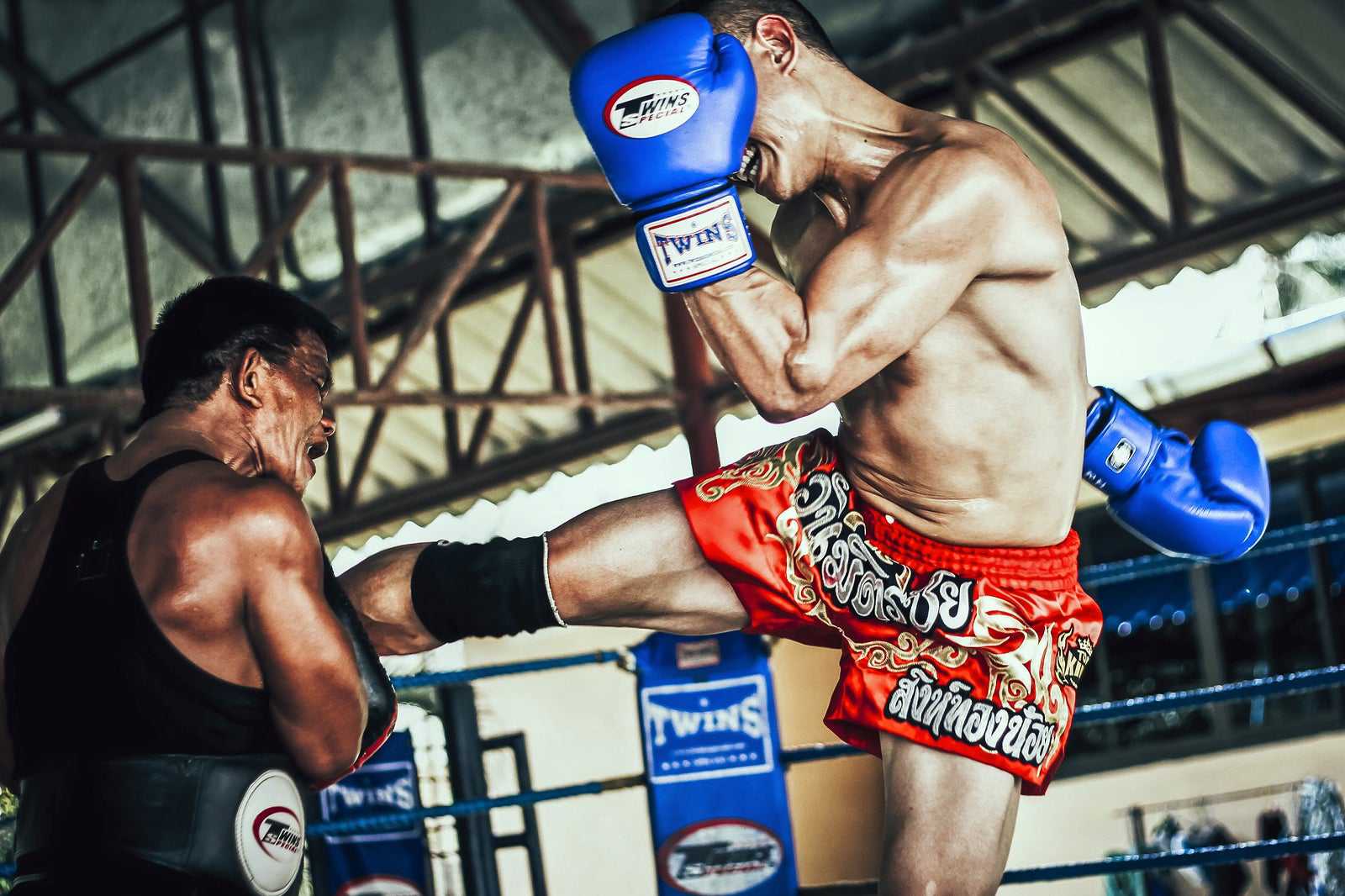Muay Thai (Thai Boxing) is one of the most popular spectator sports in Thailand. While exciting enough on TV, the relentless punches, crushing elbow strikes, powerful kicks, and artful feints are even more riveting when seen live. Travelers to Phuket can enjoy Thai boxing matches at specially built stadiums on Soi Sai Namyen in Patong.
You can enjoy the passion and drama of Thailand's national sport amid crowds of onlookers, whose cheers blend with the strains of high-pitched Javanese clarinets, drums and finger cymbals that accompany the fights from beginning to end. If you don't mind the violence, a Muay Thai boxing match is worth attending – for the pure spectacle and wild musical accompaniment, the ceremonial beginning of each match, and the frenzied betting around the stadium.

History of Muay Thai
It's believed that the origins of Muay Thai date back to the wars with the Burmese during the 15th century. Thailand's first famous boxer, Nai Khanom Tom, was said to have single-handedly defeated 9 Burmese fighters. A Thai king, Phra Chao Seua (The Tiger King) is said to have been an incognito participant in many boxing matches in the early part of his reign.
The sport has changed a lot from the days when boxers would wrap their fists in thick horsehide trimmed with cotton – soaked in glue and broken glass – for maximum impact.
Changes were also initiated to make the sport safer, reducing the incidence of death and injury. Muay Thai boxing is still a violent contact sport and considered by many as the ultimate in unarmed combat. Demonstrations of Muay Thai take place in many of Phuket's tourist areas, though they're mostly for show.

Traditions and ceremonies of Muay Thai
In Muay Thai, the training of a Thai boxer, as well as the relationship between boxer and teacher, is highly ritualised. When the boxers enter the ring, they perform a special pre-fight dance known as the ram muay.
The fighters wear a headband given by their trainer during the dance. It's a sacred talisman earned after many years of dedication to the art. The dance starts with wai khru – each boxer kneeling and bowing 3 times to show respect to his teacher. The fight begins only after the ceremonies are completed.

Highlights of Muay Thai
Each Muay Thai fight has 5 rounds of 3 minutes each. Accompanying the fight is music stimulated by action in the ring, rising and falling as the boxers battle it out. All surfaces of the body are considered fair targets, and any part of the body except the head may be used to strike an opponent.
Common blows include high kicks to the neck, elbow thrusts to the face and head, knee hooks to the ribs, and low crescent kicks to the calf. A contestant may even grasp an opponent's head between his hands and pull it down to meet an upward knee thrust.
Punching is considered the weakest of all blows and kicking merely a way to 'soften up' one's opponent. Most Muay Thai matches end with a knee or elbow strike.










